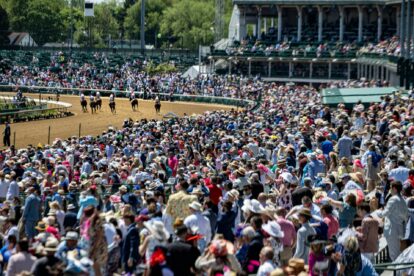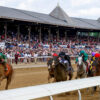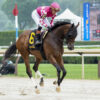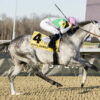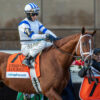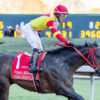The Grand National – What is it really?
If you ask any person at random in the street anywhere in the UK and Ireland to name a horse race, I would say with confidence that most would come up with the Grand National.
But , aside from it being the Grand National, what is the Grand National exactly? And more importantly how on earth do you go about selecting a winner, it’s a lottery isn’t it?
Well , no… essentially it’s a National Hunt Grade 3 handicap chase race run over 4 miles and a bit, with up to 40 competitors. That’s right – it’s a Grade 3, signifying that there are two grades above!
Horses in a handicap are weighted depending on their ‘rating’ (it’s perceived ability), which is variable throughout their career and is allocated to them by an assessor. So, the horses that are rated the highest are given more weight than those deemed inferior. What every handicapper tries to do is make it an even playground, where all horses have an equal chance of winning. This rarely comes into fruition due to the infinite number of factors that can make up a race.
Traditionally, top quality horses were rarely risked, but over time, the course has become far less hazardous due to increased safety measures being implemented.
This has been made evident by the average rating of those entered rising year upon year and we sometimes have the privilege of seeing the very cream of horses in National Hunt compete. But don’t forget that with their high ratings they will also be burdened with the most weight.
Whilst thousands of one time only punters select their horses by colour, name or by simply sticking a knitting needle in the paper, if you want to have more sustained success in this race you do need to do a bit of analysis. Once you have picked your winner, you can place your bet at Smarkets, who have some of the best horse racing odds in the UK.
The Elimination Process
It’s possible to eliminate many horses that couldn’t possibly win and earmark those that may. When you have a field of 40 to select from, narrowing down the field is an imperative.
Here are the ways that you can do this (nowadays you can check out any horses career history fairly easily online) :-
1. You’ll need a horse that has a certain level of race experience. At least 10 previous career chase runs (this being over the bigger fences) is very much a prerequisite.
2. You’ll require proven stamina. Any horse that has run at least 7 times over 3 miles (or greater) and won once or more.
3. Fitness is a must – but you can’t over do it. Your potential guy (or girl) needs to have had at least 3 runs in the season, but no more than 6.
4. Previous course form is more important at Aintree than any other. At least one prior run at Aintree will eliminate more potential picks – even better if they completed said race!
5. Next is weight. Horses with bags of it loaded onto their backs rarely do well. Looking at the statistics, I would normally say that any horse carrying more than 11 stone 6 can be routinely swerved.
6. The final point is age – you neither want a young whippersnapper or a golden oldie. ALL winners of the Grand National are aged between 8 to 11. I’m not being ageist in any way , this is a somewhat (sad) fact.
Putting Together the Final Pieces of the Grand National Puzzle
So, once you have eliminated the contenders that simply don’t cut the mustard , you are then able to look at the ones that remain in detail.
You can check :-
a) The Going – this means the ground conditions, which vary from Firm right through to Heavy. So, has your horse performed creditably on the forecasted conditions previously?
b) The Jockey – Have a look at who is on board and their previous record. You will find that some of them navigate their way around the course more often than others do.
c) The Trainer – At the moment it is the Irish based trainers that are proving to be far more successful at prepping their horses for this race. Incredibly 10 out of the first 11 horses that finished in the 2021 race were trained in the Emerald Isle?
It is entirely possible to do all of the research in the world , pinpoint a selection that is seemingly perfect for the job, as it ticks all of the boxes – yet still be unsuccessful. In racing you can always make better decisions but horses are animals and not machines after all.
Indeed there is no such thing as a ‘cert’ , with so many unknown variables at play.
Finally, I wish you all the very best of punting!

